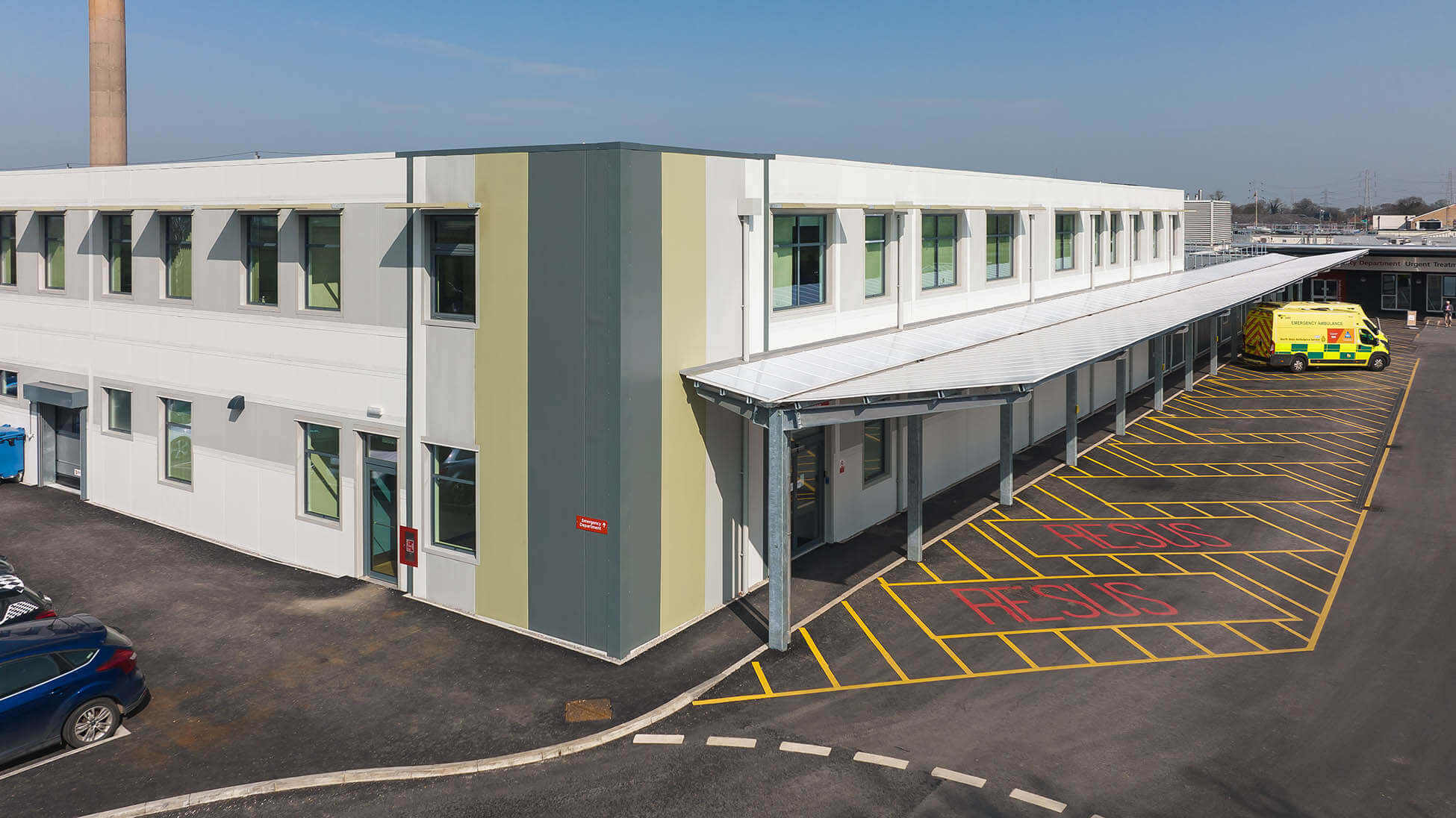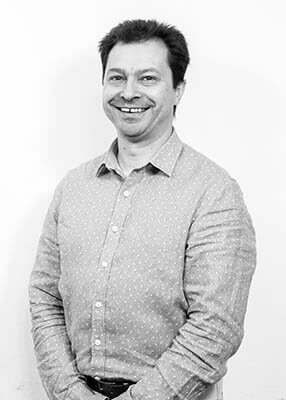
Ask the Architect Blog Series #1: With Narciso Simioni, Studio Associate Director of IBI Group
As the challenges unique to the post-Covid-19 landscape continue to be felt in medical settings across the UK, design has an essential part to play in their alleviation, delivering efficient and enhanced patient and staff experiences.
 Narciso Simioni, Studio Associate Director of IBI Group, joined us to talk about his work in the healthcare architecture industry alongside MTX, and how Modern Methods of Construction (MMC) – specifically volumetric modular solutions – could hold the key to injecting efficiency and humanity back into medical settings crippled by waiting list delays.
Narciso Simioni, Studio Associate Director of IBI Group, joined us to talk about his work in the healthcare architecture industry alongside MTX, and how Modern Methods of Construction (MMC) – specifically volumetric modular solutions – could hold the key to injecting efficiency and humanity back into medical settings crippled by waiting list delays.
Thanks for joining us, Chiso. Let’s start with your background; tell us a little about your experience in the industry.
I started my career in South Africa, mainly in the commercial and residential architecture sectors. It wasn’t until I made the move to the UK that medical settings became my primary focus. At the time it felt like a massive change. Not only was I in an entirely different country, but I was also faced with radically different methods of building and construction, different ideas about design, and differing client needs to fulfil.
In the light of that, what elements do you view as central to architectural design in a healthcare setting?
In a medical setting, the factors you have to consider are always complex and ever-evolving, and encompass everything from administration requirements to infection control!
That being said, I see the patient’s journey as central to every project. This, of course, differs from setting to setting, but tailoring dignity and respect into everything from their first impression to their final discharge is central to creating an optimum healing environment.
For example, while observation is usually key in medical settings, without an accompanying sense of patient privacy, its inclusion in design could lead to patient anxiety.
These concerns, in turn, must be balanced with the staff journey, the use of space and other key elements that are conducive to a healthy working environment.
Overall, it’s essential to ensure that the drive for efficiency never comes at the sacrifice of a positive human experience.
Tell us a little about IBI’s working relationship with MTX, and what makes the two so compatible.
Over many years of collaboration, MTX and IBI have developed a real sense of synergy, informed by our joint knowledge and understanding of the parameters of MMC. We meet on a regular basis, specifically to review past and present schemes – to discuss issues or ‘lessons learned’ that have arisen post design and during construction. Together, through these sessions, we seek to refine the designs further and look to the standardisation of the layouts and components or common elements – such as theatre suites – in order to maximise the benefits that modularisation and off-site manufacturing can bring to a project, that is: functionality, time and cost savings.
When we receive a request for a design, we question whether it fits with best practice, and apply our combined years of expertise in the health sector to facilitate the optimal way forward. Together we consider efficiency, the relationships between the spaces, and the relationships between people and space in the context of their purpose, among other factors including the limitations – if any – that modularisation may have on the intended design. There is often, however, an instinctive knowledge of what will or will not work. This I accredit to the strong, ongoing relationship that we have built over the past decade and more!
Is there a single key project that springs to mind as one where that relationship and those key elements came together to produce amazing results?
The new Elective Orthopaedic Centre at Colchester General Hospital springs to mind.
The design of the Dame Clare Marx Building has been a collaborative one; ultimately involving the Client, MTX, IBI, KLH (the Client architects who had prepared the original concept RIBA Stage 2 design), building control, planning and both the Trust Fire Safety Officer and a specialist fire consultant.
The original Stage 2 design has been reviewed and reworked extensively in line with the modularisation process that we mentioned earlier and the Client’s preferred patient flow from admission through to discharge.
The new proposal consists of a combined admissions and second stage recovery, prep, waiting, theatre, first stage recovery, and discharge rooms located on a single floor along one continuous flow, avoiding crossing of paths where possible or doubling back. The intention of this is to make the experience as smooth-running and linear as possible, reducing the potential for anxieties raised, for example: a newly admitted patient seeing other patients leave theatre.
Naturally, it was important to optimise the use of the available space on a reduced site footprint. Hence, the decision was made to locate the theatres on the ground floor – from the original second floor, with admissions at the front end of the building and recovery wards on the two floors above. It was essential to ensure that all the recovery ward rooms have an outside view, as we know that the provision of natural light has a strong connection with wellness and healing.
To ensure everything remained convenient and accessible for staff, we also maximised the value potential of vertical space, rather than horizontal, through the use of dedicated staff lifts. This will help to limit the distances travelled daily by hospital staff to complete tasks, move patients and retrieve essential items.
And what challenges did you face in executing the final design?
Meeting the Client’s needs is essential – especially in a post-Covid context when dealing with long waiting lists and delayed procedures. Therefore, optimising the design to deliver the desired outcome is at the heart of the scheme. As such this may be as much a cultural and social challenge as it is an architectural one, exploring alternative designs that may challenge current working methods or practices.
The site has presented its own challenges. There is a considerable slope to the site and it is flanked on two sides by access roads with a substantial ditch and existing buildings on the other two. Planning considerations have also dictated the extent of the useable footprint and the massing and aesthetic treatment of the proposed building.
This project is currently approaching RIBA Stage 4 with the site works currently being established on site.
In light of those challenges, what would you say have been the most significant changes in the industry since you started your journey in healthcare architecture?
Modular building has been around for a relatively long time but it’s been great to see it embraced by the mainstream as a functional, adaptive solution. Today, MMC rivals traditional build methods, matching their longevity, potentially exceeding their sustainability, and providing time-saving and efficient solutions with much less disruption.
Every job tends to be unique – it’s no longer just a puzzle kit of pieces that fit together – MMC is constantly evolving to become more efficient and cost-effective in a variety of settings. However, the main focus remains: to absorb limitations and tailor the modular style to the need for maximum efficiency without compromising the resulting patient and staff experience.
Looking to the future in light of your years of experience, have you identified any emerging industry trends to keep an eye out for?
In my opinion, tactility and human-centric design are the future of medical architecture. Tech doesn’t negate the human touch and should be used to enhance the social aspect of design, especially in a healing context. We’ve seen the barriers that isolation creates towards wellness and healing through the pandemic, and human-centric design has the potential to solve this issue.
Finally, on a personal level, tell us a bit about your connection with medical design and architecture, and what maintains your passion for it.
It’s refreshing to carry out wellness and people-oriented design. The work can be really emotive, especially when the project is complete and you get to hear direct feedback from those impacted by the positive changes you’ve help bring to fruition. It’s uniquely fulfilling on a level that commercial and residential projects could never match.
Being able to add a splash of colour, an injection of natural light or literally a breath of fresh air to the everyday setting of people suffering with either their physical or mental health is immensely rewarding.
